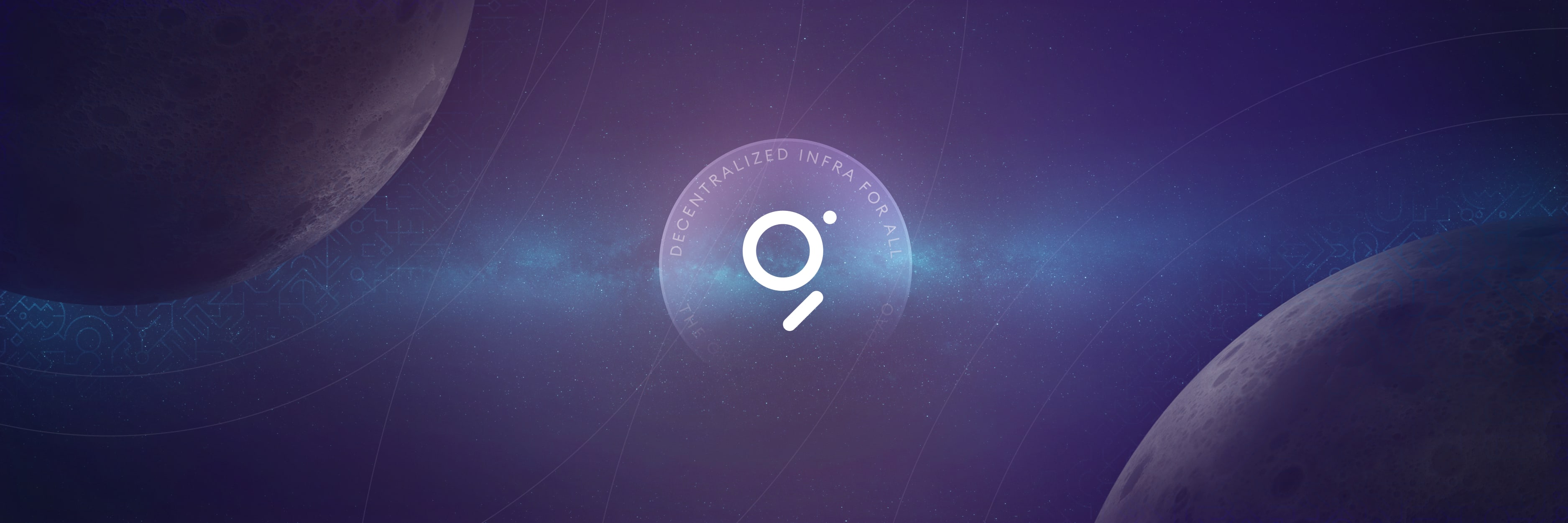

The Graph Developer Newsletter #4
🏗️ Subscribe to get The Graph Developer Newsletter delivered straight to your inbox 🏗️
gm web3 devs, happy (almost) May!
We are so thankful you are here building with us towards a decentralized future. As The Graph ecosystem and web3 grows at an incredible pace, it helps to take a minute and appreciate this community.
Everyone here is doing truly astounding things, and we hope to support these efforts by sharing recent developments in The Graph, and how they might help our development.
Keep building builders ♥️
Before we go through these sections, please give us your feedback with this easy Developer Survey:
Developer Survey
Building The Graph Network is a collaborative effort and the core devs would love to hear your feedback!
How likely would you recommend The Graph's decentralized network to a fellow web3 developer? Just click the emoji to indicate your vote.
A short survey follows that you can answer or dismiss.
🙁 😐 🙂
Topics in this edition include:
- Arbitrum indexing rewards are live
- ETHGlobal Tokyo event in review
- The Graph Network Billing 2.0 Preview
- File Data Sources video tutorial
- Sepolia Testnet is live on Subgraph Studio
- ETHGlobal Lisbon preview
- Upcoming features on Graph Node
—
Arbitrum Indexing Rewards
A new milestone was reached on the path to scaling The Graph on L2: 5% of the total protocol indexing rewards are now emitted to Indexers who activated their protocol operations on Arbitrum. Although it was possible to publish subgraphs to The Graph Network on Arbitrum One before, with this step the Indexers also have the incentive to index subgraphs there.
Therefore, we can now publish our subgraphs directly to The Graph Network on Arbitrum One. There are already 120 subgraphs published on Arbitrum One at the time of writing.
Read more about the next steps from Pablo Carranza Velez in GIP-0052: Timeline and requirements to increase rewards in L2 on The Graph Forum.
The Graph at EthGlobal Tokyo 2023 review
EthGlobal Tokyo was a whirlwind of energy for all things web3. Hackers stayed up late and submitted some fantastic projects using The Graph. Congratulations to all the winners! There were 27 projects applying for The Graph bounties and it was hard to pick a winner, so we also opened up a Pool Prize.
Best New Subgraph:
Best Use of Existing Subgraphs:
Pool Prize:
🏊 Web3PortfolioWallet, BorrowFi, DID ECO (DAO ID), splash X, ZKredentials, Taste Journey Ticket, POMPoarding, Megaxis, O-Hashi x Censorship Oracle, ENS Expiry Notice from MetaMask, LoyalFi, RediFlow, Shin Protocol
Splend
The first prize hackathon submission for Best New Subgraph was Splend, a decentralized peer to peer microlending protocol to connect social impact conscious lenders to borrowers who do not have access to capital.
Splend allows users to create a loan proposal in less than 10 minutes which includes specific deal terms such as term length and rate. It also features a marketplace where both lenders and borrowers can check out a repository of loans as wellan instant funding mechanism which transfers the loan amount from the lender to borrowers as soon as the lender decides to fund a project. The social impact of Splend that directly supports people and communities was inspirational for judges, and gave them a well-earned first prize.
DeFi Anime
The first prize hackathon submission for Best Use of Existing Subgraph was awarded to DeFi Anime, an animated dashboard to show what happened to the Uniswap V3 USDC/ETH pool with 0.3% fee over different time periods. Most DeFi analytics are static snapshots of time, like pool reserve balances, or charts of historical prices and volumes. Using animated visuals, details like which accounts liquidity flows can be made from when can be shown.
Seeing the DeFi animated dashboard displaying the complexity of the Uniswap V3 Subgraph in a consumable format was a treat for judges at the hackathon, giving the DeFi Anime team the first prize.
The Graph Network Billing 2.0 Preview
Billing is about to get a huge upgrade in the coming months! Let's go through all of the elements that will be a part of the new Billing 2.0 experience.
The Upcoming Billing 2.0 Experience: The ultimate goal is to achieve a "set-it-and-forget-it" experience where we can setup either a Pay As You Go (equivalent to today's experience) or Subscription Plan that we can pay with using GRT, stablecoins and fiat and then turn on auto-recurring payments so we don't have to think about billing again - unless we see significant change in our dapp's usage.
Billing 2.0
Features:
- 🔄Subscriptions: Edge & Node is developing a subscription protocol that will allow The Graph Network's users an option to purchase a fixed query rate for a fixed price on a monthly basis. This helps to offer users more predictable pricing on The Graph Network while also streamlining the user experience of payments.
- 💱Multiple currencies: When Billing 2.0 is fully realized, The Graph Network's users will be able to pay for queries with GRT, stablecoins and fiat using the newly-integrated Banxa on-ramp
- ♻️Auto-Recurring Payments: There are plans to integrate auto-recurring payments to help minimize the amount of manual transactions from month-to-month.
These are exciting features that will improve the overall UX using The Graph in the coming months!
Subgraph Creation and File Data Sources Tutorial
Nestor, Developer Relations Engineer for Celo created a wonderful 3-part series featuring The Graph!
A particularly special part of this content was when Simon from Edge & Node and Nestor teamed up to make a video on using File Data Sources in subgraphs.
Check out the full video here, as well as the specific segment concerning File Data Sources.
We are excited for File Data Sources getting more exposure as they are the gateway into unlocking off-chain indexing of data! If you want to get started using File Data Sources, head over to The Graph Docs. Please note that File Data Sources are still in beta. If you run into any issues, reach out in Discord or reply directly to this email. As of now, only IPFS is supported as a File Data Source. More protocols are in the making. Stay tuned for more developments… 🎉
Sepolia Testnet is Live on Subgraph Studio
Being able to build our subgraphs on Sepolia alleviates a lot of the issues that were occurring with the Ethereum Goerli chain. On top of that, it is the officially recommended testnet for Ethereum. Now it's time to start building on Sepolia! There’s a much more stable supply of ETH in Sepolia, and now that subgraphs are able to index Sepolia, we can develop our dapps on Sepolia.
As with all of the testnets available on The Graph, you can access Sepolia through Subgraph Studio. Please note that the “Developer Preview URL” in Subgraph Studio is rate-limited. If you need higher throughput, please reply directly to this email.
The Graph at ETHGlobal Lisbon from May 12 - 14
The Graph Foundation is sponsoring ETHGlobal Lisbon that will happen from May 12 to 14 2023. There are bounties of $7500 up for grabs for projects building on The Graph. Applications are still open but will be closed on Monday, May 1st 2023, 5pm WET | 12pm ET! Come build and learn together.
There will be a side event about Account Abstraction, the hot topic in the Ethereum space right now supported by The Graph on Saturday, May 13. Sign up here.
Upcoming features on Graph Node
The Graph Node team is working on some features that will make our lives as subgraph developers easier. These features are expected to land in the coming weeks on Subgraph Studio and accompanying documentation is currently being written. Here is a quick outlook:
- Derived field loaders: It was not possible to access a referring entity through a derived field (@derivedFrom()) as described in the docs. This limitation has led to work-arounds that can have a negative impact on indexing and querying performance. Namely, large arrays. With this feature, we can now traverse through entity relationships in our mappings and avoid these work-arounds and end up with nicer code.
- Subgraph pruning: Subgraphs by default keep historic data in order to enable time-travel queries. This can bloat up the database unnecessarily, especially when time-travel queries are not used. There is already a Graphman command: `graphman prune` which Indexers can trigger manually. With this feature, some control over data pruning can be put to us subgraph developers.
- Substream-powered-subgraphs: In the last edition we talked about Substreams and hinted to the first application of substreams: substream-powered-subgraphs. The StreamingFast team is currently working on a reference implementation of the Uniswap V3 subgraph powered by Substreams. They are working in public so we can already have a peek on the GitHub repo. Another great source of example code is Messari’s substreams repo.
Some of these features will land in graph-node v0.31.0 for which the release candidate is planned to be released around May 5th. If you are interested in trying out any of these new features, just reply to this email and we can put you on the tester list.
Thanks for reading this far. We hope you enjoyed this edition. Feedback and suggestions are always welcome, just reply directly to this email. We read every reply 💌
-
Happy hacking!
Marcus & Simon from Edge & Node, working on The Graph
Building The Graph Network is a collaborative effort and the core devs would love to hear your feedback!
